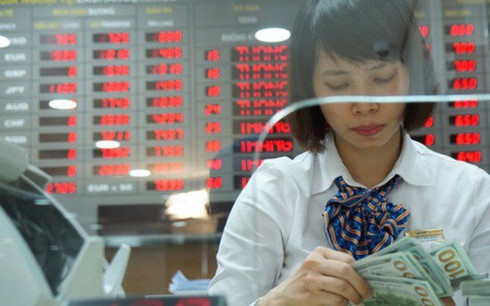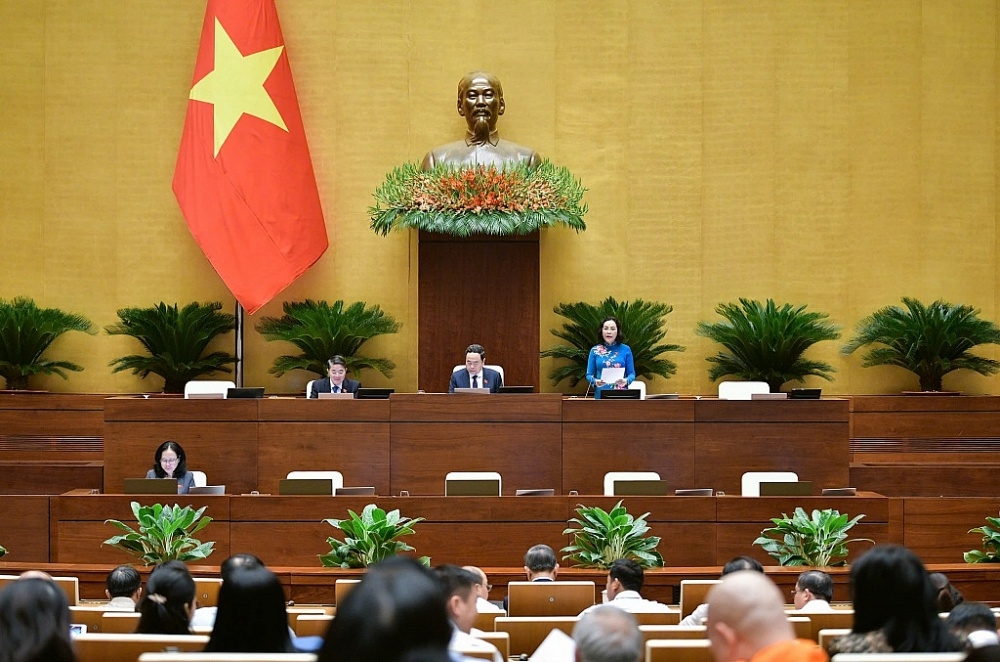Vietnam’s central bank to ease lending rates
 |
Illustrative image (Photo: VNA)
To achieve such a result, the central bank in late November 2018 sold greenback futures that would be delivered in late January 2019 to raise the market supply of dollars, vneconomy.vn reported.
Then on the first working day of 2019 (January 2), the central bank for the first time in a year raised its purchasing rate by 500 VND to 23,200 VND for a dollar from the last-day rate of 2018.
As of December 31, 2018, the purchasing rate for a US dollar set by the SBV was 22,700 VND. The rate was cut by 10 VND on February 8, 2018.
In addition to the two technical measures, the central bank also increased the gap between Vietnamese dong and dollar interest rates on the interbank market, making Vietnamese dong more attractive for savings and thus balance the foreign exchange rate with the dollar.
After a month, the central bank was able to lure a huge amount of US dollars for its reserves, proving the supply of foreign currency in Vietnam had been great and consolidating and helping transform a part of foreign currency held in the economy in recent years.
But the SBV may not stop buying dollars from the market, not only to increase its foreign reserves but also to lower the dong lending rates.
Buying 4 billion USD means the SBV had to inject a huge amount of Vietnamese dong into the market, which would help balance the market demand-supply during the Tet period – the peak season for making payments – and create additional supply of cash for lenders – who accepted mortgages from borrowers.
Local commercial banks have recently cut their dong-based lending rates. For example, the Joint Stock Commercial Bank for Foreign Trade of Vietnam (Vietcombank) on January 9 cut its lending rate for short-term loans by 0.5 percent to 6 percent.
Vietnamese dong-based interest rates have been kept more attractive than the dollar-based ones, raising expectations that cash would flow back into commercial banks after the festival was over, and thus, easing the lending rates among commercial banks.
Between late 2018 and late January 2019, dong-based interbank offered rates kept increasing to 5.19 percent per year, twice the dollar-based offered rate on the same market.
Between commercial banks and inpidual and institutional clients, dong-based offered interest rates showed signs of increasing to 8.5-8.7 percent per annum for long-term savings.
In 2018, many central banks had to increase interest rates and depreciate domestic currencies to deal with the stronger dollar and the outflow of foreign capital.
During last year, the global markets became used to the Federal Reserve’s rate increase plan as it reflected the “hawkish view” of Fed officials, strengthened the dollar against other currencies and resulted in the outflow of foreign capital from emerging markets.
On January 30, the Fed signalled it may stop raising rates and global analysts saw that could be the end of the rate hike plan. And it may even mean the Fed would cut rates if needed.
Related News

Stipulate implementation of centralized bilateral payments of the State Treasury at banks
09:29 | 29/10/2024 Finance

How does the Fed's interest rate cut affect Vietnam?
11:56 | 05/10/2024 Headlines

Bank profits improve but there are no expectations
09:48 | 20/07/2024 Import-Export

Another six months for debt restructuring but need to manage bad debt risks
09:37 | 12/07/2024 Finance
Latest News

M&A activities show signs of recovery
13:28 | 04/11/2024 Finance

Fiscal policy needs to return to normal state in new period
09:54 | 04/11/2024 Finance

Ensuring national public debt safety in 2024
17:33 | 03/11/2024 Finance

Removing many bottlenecks in regular spending to purchase assets and equipment
07:14 | 03/11/2024 Finance
More News

Continue to handle cross-ownership in banks
10:35 | 02/11/2024 Finance

Striving for average CPI not to exceed 4%
16:41 | 01/11/2024 Finance

Delegating the power to the government to waive, lower, or manage late tax penalties is suitable
16:39 | 01/11/2024 Finance

Removing difficulties in public investment disbursement
09:30 | 31/10/2024 Finance

State-owned commercial banking sector performs optimistic growth, but more capital in need
09:28 | 31/10/2024 Finance

Rush to finalize draft decree on public asset restructuring
09:28 | 29/10/2024 Finance

Inspection report on gold trading activities being complied: SBV
14:37 | 28/10/2024 Finance

Budget revenue in 2024 is estimated to exceed the estimate by 10.1%
10:45 | 28/10/2024 Finance

Ensure timely and effective management and use of public asset
11:31 | 27/10/2024 Finance
Your care

M&A activities show signs of recovery
13:28 | 04/11/2024 Finance

Fiscal policy needs to return to normal state in new period
09:54 | 04/11/2024 Finance

Ensuring national public debt safety in 2024
17:33 | 03/11/2024 Finance

Removing many bottlenecks in regular spending to purchase assets and equipment
07:14 | 03/11/2024 Finance

Continue to handle cross-ownership in banks
10:35 | 02/11/2024 Finance




